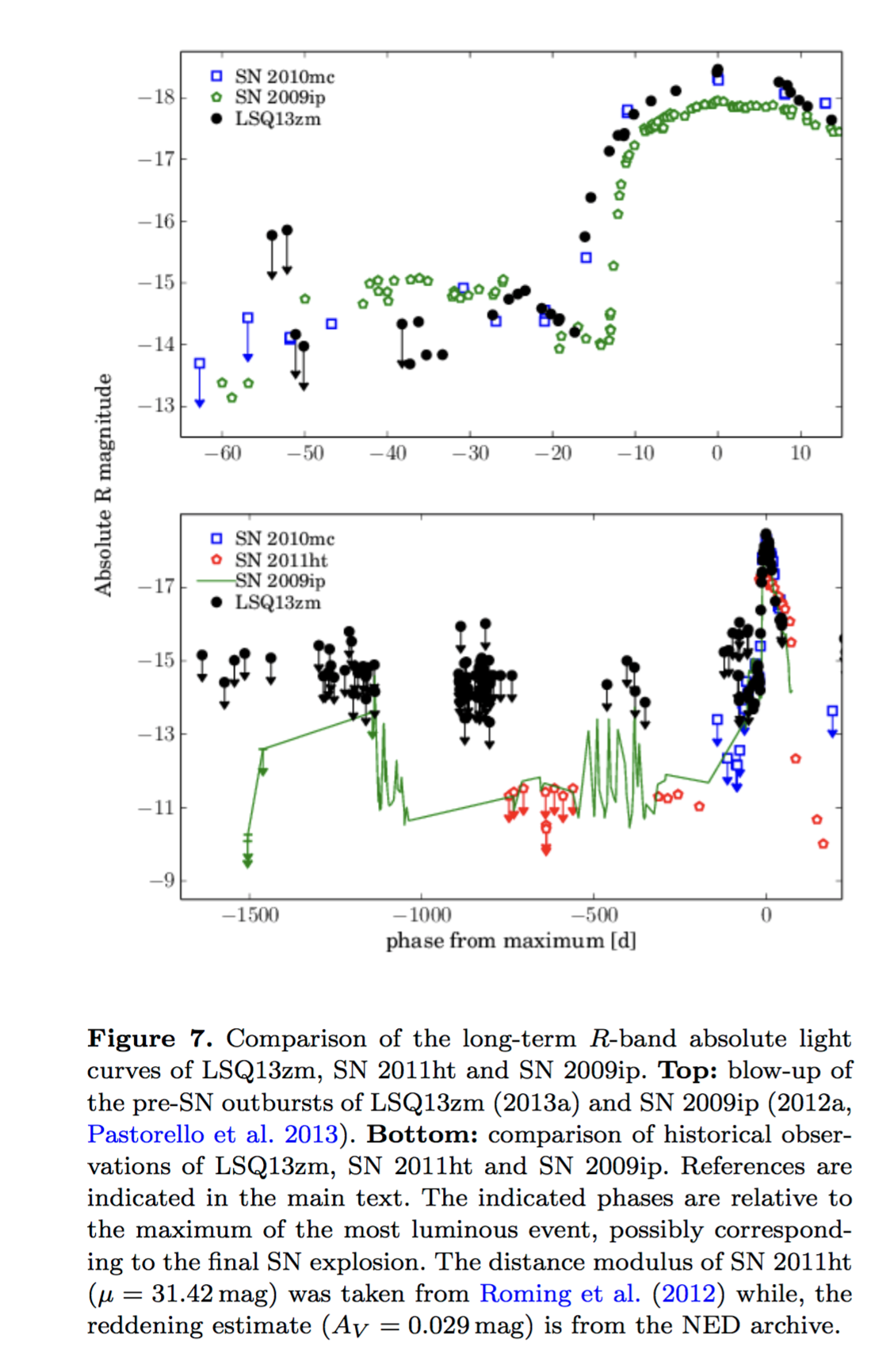Padova-Asiago Supernova Group
Highlights
Interacting supernovae and supernova impostors. LSQ13zm: an outburst heralds the death of a massive star
Tartaglia et al. 2016 MNRAS 459, 1039 (link to pdf)
We report photometric and spectroscopic observations of the optical transient LSQ13zm. Historical data reveal the presence of an eruptive episode (that we label as 2013a) followed by a much brighter outburst (2013b) three weeks later, that we argue to be the genuine supernova explosion. This sequence of events closely resem- ble those observed for SN 2010mc and (in 2012) SN 2009ip. The absolute magnitude reached by LSQ13zm during 2013a (MR = 14.87+/-0.25 mag) is comparable with those of supernova impostors, while that of the 2013b event (MR = 18.46 +/- 0.21 mag) is consistent with those of interacting supernovae. Our spectra reveal the presence of a dense and structured circumstellar medium, probably produced through numerous pre-supernova mass-loss events. In addition, we find evidence for high-velocity ejecta, with a fraction of gas expelled at more than 20000km s1. The spectra of LSQ13zm show remarkable similarity with those of well-studied core-collapse supernovae. From the analysis of the available photometric and spectroscopic data, we conclude that we first observed the last event of an eruptive sequence from a massive star, likely a Lu- minous Blue Variable, which a short time later exploded as a core-collapse supernova. The detailed analysis of archival images suggest that the host galaxy is a star-forming Blue Dwarf Compact Galaxy. 76
Tartaglia et al. 2016 MNRAS 459, 1039 (link to pdf)
We report photometric and spectroscopic observations of the optical transient LSQ13zm. Historical data reveal the presence of an eruptive episode (that we label as 2013a) followed by a much brighter outburst (2013b) three weeks later, that we argue to be the genuine supernova explosion. This sequence of events closely resem- ble those observed for SN 2010mc and (in 2012) SN 2009ip. The absolute magnitude reached by LSQ13zm during 2013a (MR = 14.87+/-0.25 mag) is comparable with those of supernova impostors, while that of the 2013b event (MR = 18.46 +/- 0.21 mag) is consistent with those of interacting supernovae. Our spectra reveal the presence of a dense and structured circumstellar medium, probably produced through numerous pre-supernova mass-loss events. In addition, we find evidence for high-velocity ejecta, with a fraction of gas expelled at more than 20000km s1. The spectra of LSQ13zm show remarkable similarity with those of well-studied core-collapse supernovae. From the analysis of the available photometric and spectroscopic data, we conclude that we first observed the last event of an eruptive sequence from a massive star, likely a Lu- minous Blue Variable, which a short time later exploded as a core-collapse supernova. The detailed analysis of archival images suggest that the host galaxy is a star-forming Blue Dwarf Compact Galaxy. 76
